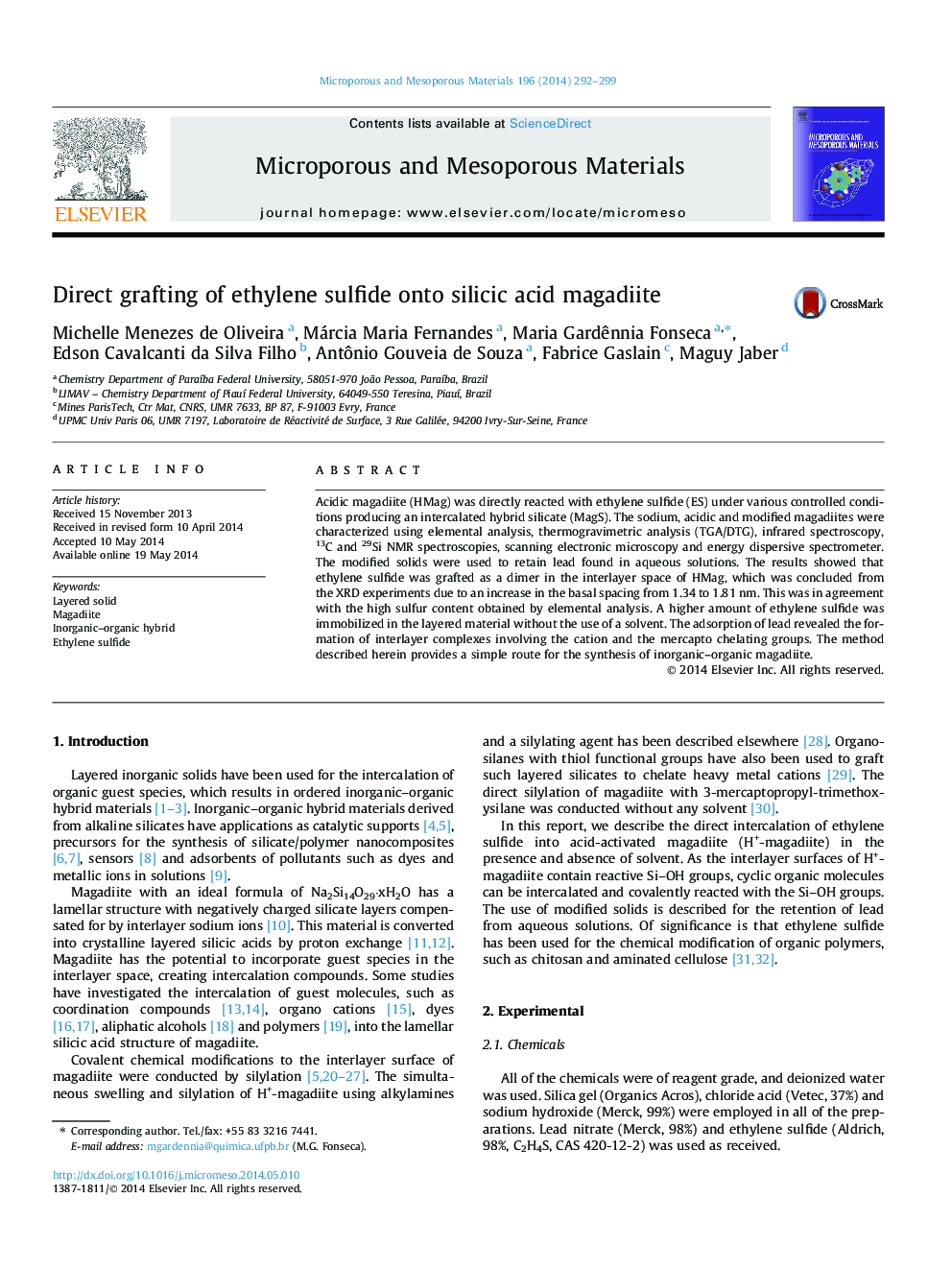| Article ID | Journal | Published Year | Pages | File Type |
|---|---|---|---|---|
| 73016 | Microporous and Mesoporous Materials | 2014 | 8 Pages |
•Ethylene sulfide reacts covalently with H-magadiite.•Ethylene sulfide molecules have been grafted as dimmers in H-magadiite.•The reaction between ethylene sulfide and H-magadiite showed a better yield for the synthesis realized without solvent.•The magadiite hybrid can be used as an adsorbent for removing cations from aqueous solutions.
Acidic magadiite (HMag) was directly reacted with ethylene sulfide (ES) under various controlled conditions producing an intercalated hybrid silicate (MagS). The sodium, acidic and modified magadiites were characterized using elemental analysis, thermogravimetric analysis (TGA/DTG), infrared spectroscopy, 13C and 29Si NMR spectroscopies, scanning electronic microscopy and energy dispersive spectrometer. The modified solids were used to retain lead found in aqueous solutions. The results showed that ethylene sulfide was grafted as a dimer in the interlayer space of HMag, which was concluded from the XRD experiments due to an increase in the basal spacing from 1.34 to 1.81 nm. This was in agreement with the high sulfur content obtained by elemental analysis. A higher amount of ethylene sulfide was immobilized in the layered material without the use of a solvent. The adsorption of lead revealed the formation of interlayer complexes involving the cation and the mercapto chelating groups. The method described herein provides a simple route for the synthesis of inorganic–organic magadiite.
Graphical abstractReaction between the H-magadiite (HMag) and ethylene sulfide (ES) forming the hybrid MagS.Figure optionsDownload full-size imageDownload as PowerPoint slide
